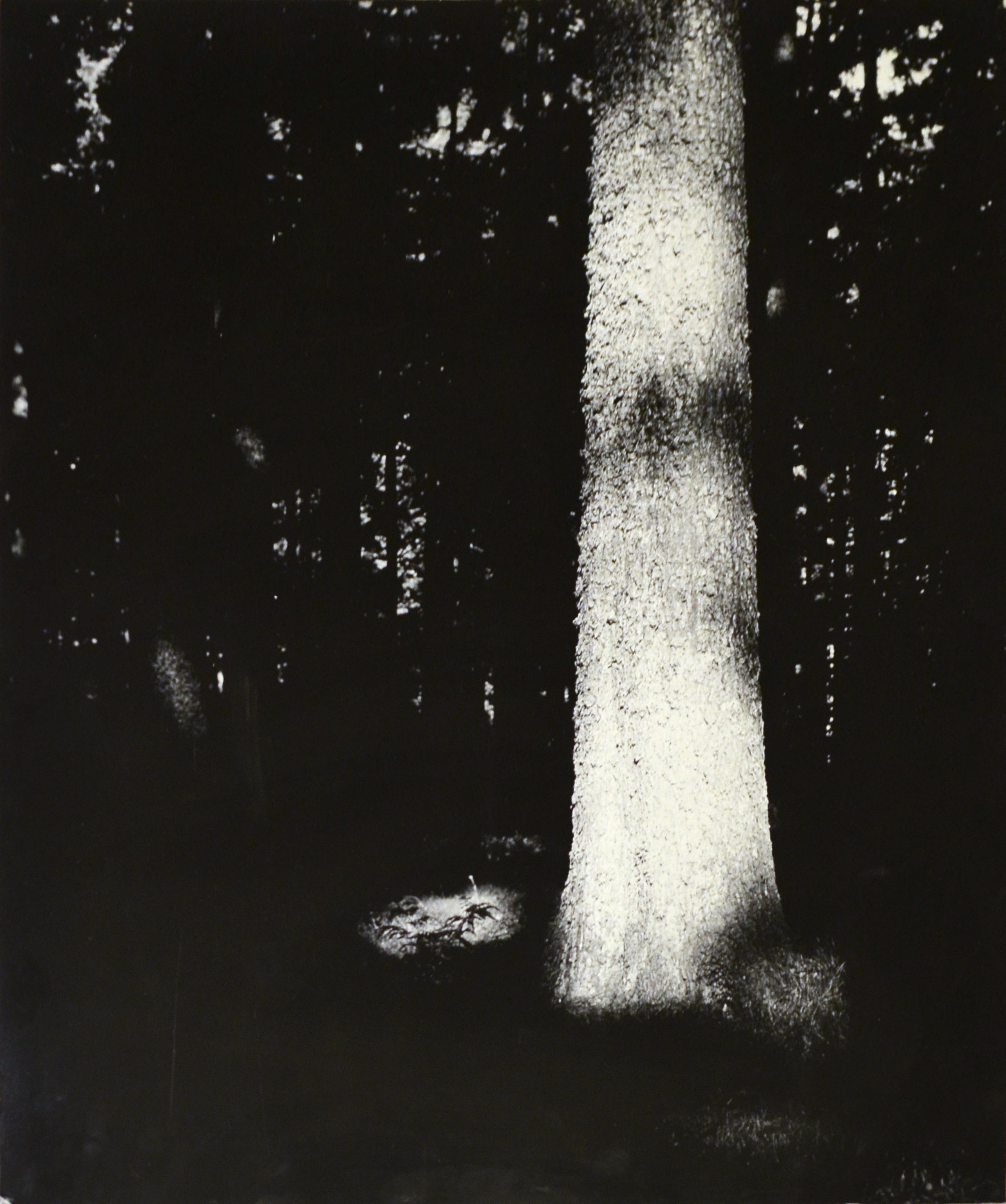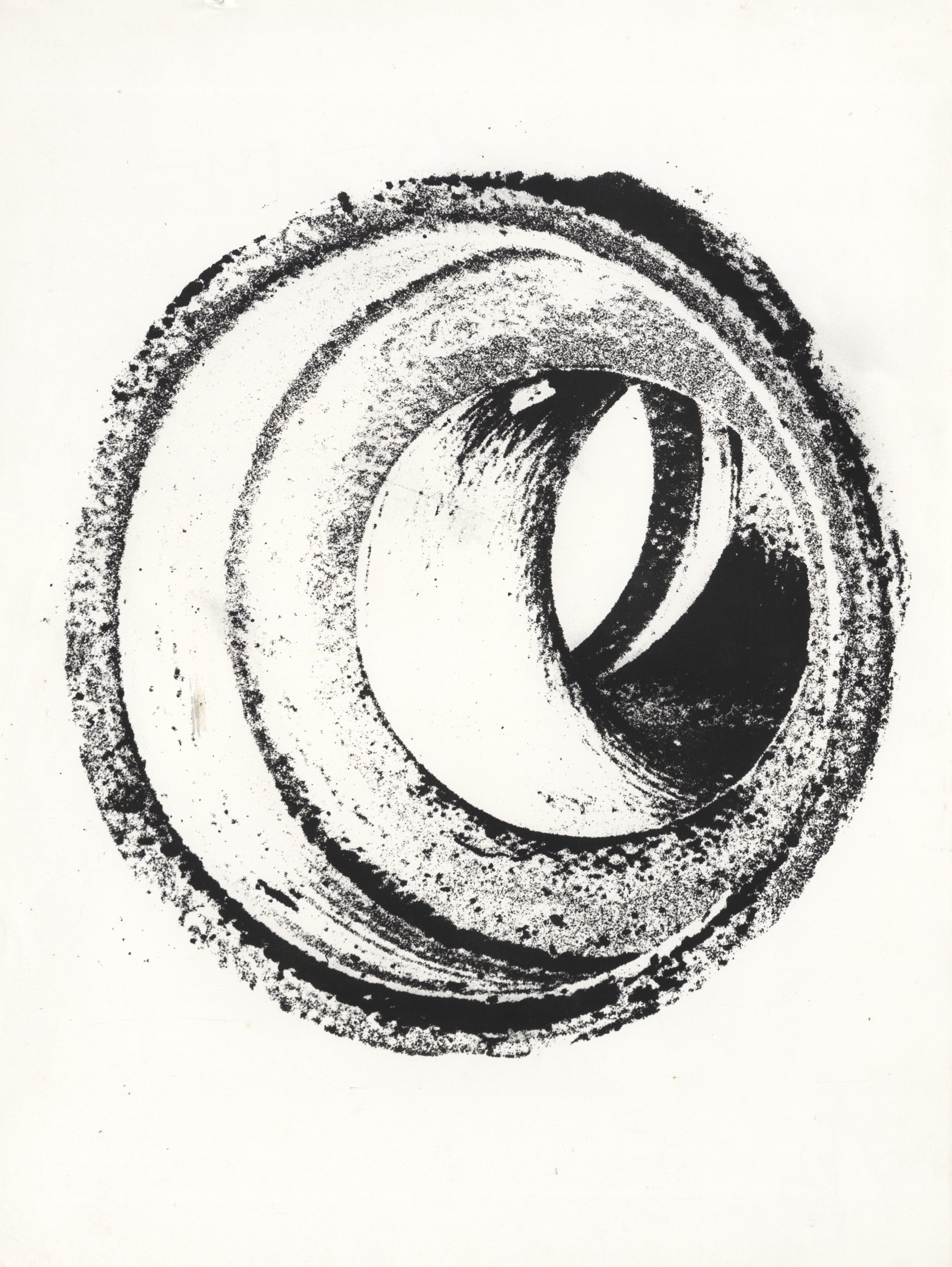Monika von Boch: Sheroes of Photography VI | Kicken Berlin
Monika von Boch (1915-1993), Tree in Forest“, 1963, gelatin silver print, printed ca. 1963-69, © Estate Monika von Boch / VG Bild-Kunst, Bonn, 2024 / Courtesy Kicken Berlin
Written by Trip Avis
Photo Edited by Kelly Woodyard
In the sixth exhibition of Sheros of Photography, an ongoing series honoring the talent of contemporary and historical female artists working in the photographic medium, Kicken Berlin intrigues viewers with the stark, haunting vision of photographer Monika von Boch (1915-1993). Studying under founder Otto Steinert in the 1950s, Monika von Boch was the preeminent female photographer operating in the subjective photography movement. Her work encapsulates the movement’s ethos of focusing on the inner world — the intricacies of the human condition and psyche — over the external or superficial. On display between November 28th and April 12th, 2024, it is essential to note that von Boch did not publish many of the photographs displayed before her death. This compelling fact allows visitors to the Berlin-based gallery to be among the first to experience this selection of von Boch’s striking work.
Monika von Boch’s techniques, such as photograms and negative prints, help conjure her photography's severity and crisp detailing. The striking effect of these methods is apparent in images such as Linde / Lime, 1962, and Kirschbaumrinde / Bark of Cherry Tree, 1965. In the former, a photogram of a linden tree leaf, von Boch effectively takes the viewer inside this small yet dazzling instance of nature. Like an X-ray image captures the complex skeletal structure of an animal, the light-sensitive paper has a similarly revealing effect, illuminating the intricacies of the linden leaf’s vascular structure.
Monika von Boch (1915-1993), Ear (Tubes)“, 1956-1958, gelatin silver print, printed ca. 1956-1958, © Estate Monika von Boch / VG Bild-Kunst, Bonn, 2024 / Courtesy Kicken Berlin
The venation glows in stark contrast to the photographic paper, like a constellation of stars against the inkwell of space—a universe in a single leaf. It is a sample of nature's vastness and complexity, obscured by the naked eye but brought forth through photography. Kirschbaunrinde, an exercise in negative prints, is similar to Linde in capturing the complexity of the flora. However, while the former reveals a tight structural uniformity, the latter image displays an asymmetry verging on chaos. The tree bark resembles chalky mountain ridges; the deep inner grooves appear like dancing shadow figures. Simultaneously, Von Boch distorts and clarifies the basic building blocks of nature, allowing them to take on a mystic, symbolic quality forged in the viewer’s imagination.
There is a keen delicacy to von Boch’s relationship with her natural surroundings, seen in the quietly mesmerizing photograph Fügelschlag im Schnee / Wing Beat in Snow, 1978. The snow glows luminously in the black-and-white image, invoking something Keatsian in nature: “[...] gazing on the new soft-fallen mask / Of snow [...]” The snow in the low, glittering lighting of the image conjures many things in the mind’s eye—powdered sugar traced by fingertips, the downy softness of cotton candy. It is a silent message from nature, a winged creature, to the observer. The bird was there briefly; it left its gentle mark on a landscape that will someday melt, a transience that makes the image all the more touching.
Monika von Boch (1915-1993), Pine Bark, Äckerle“, 1972, gelatin silver print of a photogram, printed ca. 1972, © Estate Monika von Boch / VG Bild-Kunst, Bonn, 2024 / Courtesy Kicken Berlin
Von Boch’s photographs with human subjects are equally entrancing and confounding in composition. This is particularly true of steelworkers at Dillengen Mill in the artist’s native Saarland, Germany. One of these images, Hochofen Thomasbirne (Dillinger Hütte) / Blast Furnace Thomas Converter (Dillingen Mill), 1963, depicts a worker standing before the open furnace, manipulating the molten steel with some kind of tool. The photograph has a filmy blur, which reduces the worker and the surrounding factory setting to a ghostly memory rather than a blunt representation. The darkened outlines of the worker’s jacket and helmet are smudged like chalk sketches onto the background. However, the foreground draws the eye with its wavelength of burning white light, a sharp contrast to the muted gray surroundings. Feuer-Tanz / Fire Dance, 1963, is another treat for the eye. The human subject is more distant and even further distorted, but one can see the folds of his work pants and boots. The light emitting from the molten steel stands tall beside him like an entity of equal life and fervor.
Monika von Boch’s work is a testament to her ability to craft images that evoke personal allusions in each individual’s mind and find the dazzling complexities in the minutiae. It reminds us that if we simply take the time to look, we can discover mosaics in a single leaf and an eternity in a moment, etched softly in a bed of snow.
Monika von Boch (1915-1993), Fire-Dance“, 1963, gelatin silver print, printed ca. 1963, © Estate Monika von Boch / VG Bild-Kunst, Bonn, 2024 / Courtesy Kicken Berlin











